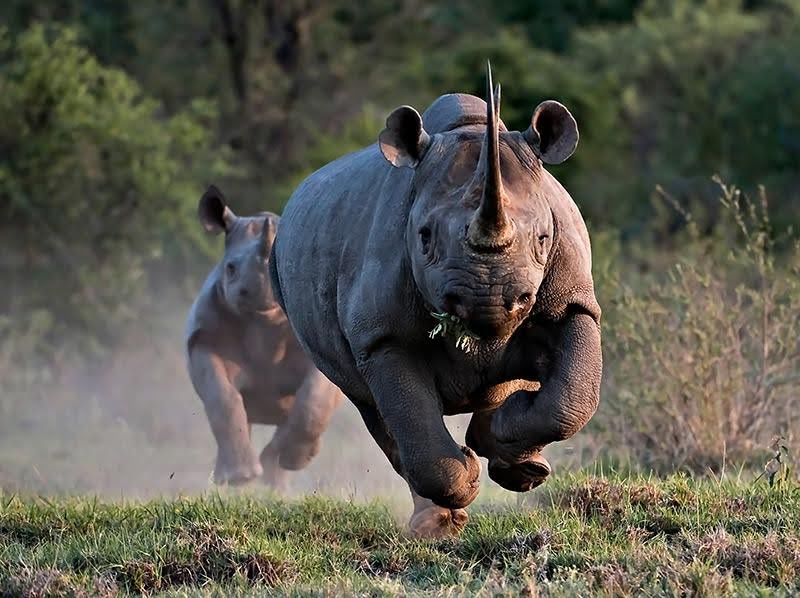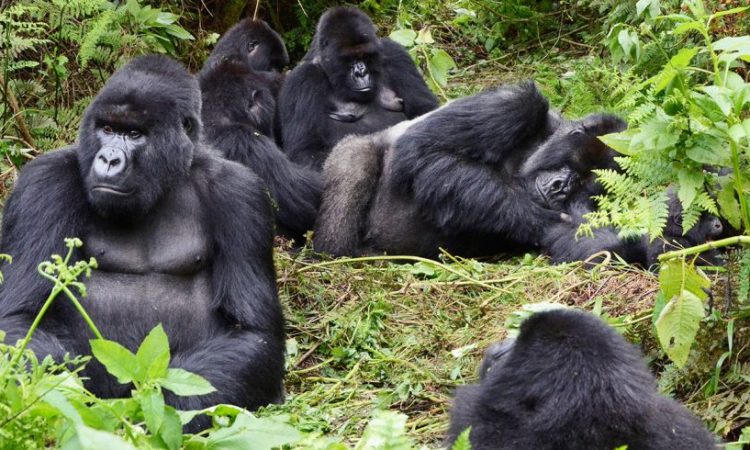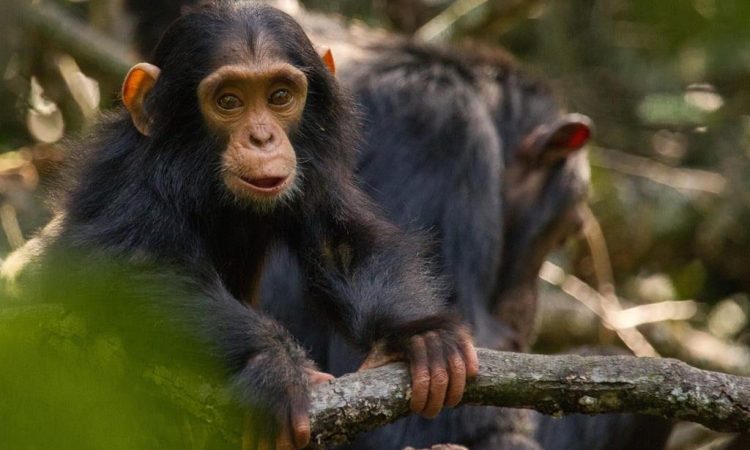Rwanda’s Most Endangered Mammals
Rwanda‘s Most Endangered Mammals: An organism that faces extinction is considered an endangered species. Some of these species are mammals, which are extremely vulnerable and may go extinct if humans do not take action to conserve them. There are thousands of species in Africa, some of which are in danger of going extinct. Rwanda wildlife safaris offer an exciting experience.

Black Rhinoceros
Diceros bicornis, one of the two African species of rhinoceros, is the scientific name for this critically endangered mammal. This beautiful creature, which stands five feet tall, weighs between 700 and 1300 kg. These herbivorous animals live in a range of environments in Akagera National Park, such as riverbanks, open plains, bushes, and thickets.
Akagera National Park in northeastern Rwanda is where eastern black rhinos were relocated from South Africa. In 2011, the Western Black Rhino, the rarest of the black rhino subspecies, was formally deemed extinct. Their demise was primarily brought on by poachers who killed them for their highly valued horns, which are used in traditional Chinese medicine and can sell for up to $400,000 a kilogram on the illegal market.
On the illicit market, rhino horn can sell for as to. Southern white rhinos, formerly thought to be extinct in Africa, are now rated near-threatened and live in protected sanctuaries. But thanks to tenacious conservation efforts throughout Africa, particularly in South Africa, Kenya, Zimbabwe, Namibia, and Rwanda, the number of black rhinos has increased to around 6,100 today.

The mountain Gorillas
Rwanda boasts one of the biggest tourism industries, ranking third among Africa’s most popular travel destinations and 77th globally. The IUCN Red List lists mountain gorillas, one of Rwanda‘s most popular tourist destinations, as endangered. The eastern and western gorillas are the only two species of gorillas found worldwide. Male mountain gorillas typically weigh between 130 and 150 kilos. Mountain gorillas are a subspecies of eastern gorillas (Gorilla beringei). Only in Rwanda‘s Volcanoes National Park, which is home to ten gorilla family groups with eleven to thirty-three members, can one find these fascinating primates. There are over 11 people in each family group, including multiple females and a dominant male. In order to avoid breeding, the majority of males and about 60% of females leave their birth group when they get older and join another colony. As Rwanda’s Most Endangered Mammals, the males and females in the group tend to their baby and protect one another as a family. In addition to being threatened by habitat loss brought on by human encroachment, mountain gorillas have also been the targets of human violence. For instance, during the Genocide, efforts to protect mountain gorilla populations were halted in Rwanda; however, as time passed and the political situation in the country stabilized, the Rwandan government made multiple attempts by actively promoting tourism and protecting national parks. According to the most recent census, there are only roughly 1,000 of these big apes left in the wild.
Chimpanzee

A large ape species indigenous to tropical Africa’s forests and savannah is the chimpanzee (Pan troglodytes). It is also referred to as the common chimpanzee or just the chimp. All four of the chimpanzee’s subspecies are endangered. In the animal realm, chimpanzees are our closest cousins. They are surprisingly smart; they solve problems well, use tools, and communicate with intricate vocalizations. Additionally, they are essential to preserving the diversity of rain forests in Africa. A mature chimp can reach the age of 39 and weigh more than 40 kg. There are more than 400 chimps in Rwanda’s Nyungwe National Park, which includes the Nyungwe and Cyamudongo forests. They also live in Gishwati Mukura National Park, the newest national park in the nation. The number of chimps in the wild has severely decreased to an alarming 300,000 due to widespread hunting and deforestation. Babies born to new chimp mothers are kept in captivity and marketed as pets, while poachers kill them down for bush meat. All of these factors, along with others like ignorance, have contributed to the decline in chimpanzee populations. Nonetheless, the Rwandan government has taken an active role in creating and combining national parks, like Gishwati Mukura National Park, across the chimpanzee’s habitat, and upholding wildlife regulations will be crucial to preserving healthy populations for future generations. The Most Endangered Mammals in Rwanda.
African Elephants

The African savanna elephant and the smaller African forest elephant are the two extant species of African elephants (Loxodonta). The largest elephant species and largest mammal on the planet, African savanna elephants reach an astounding 3.2 meters in height. In addition to having grey skin, these very gregarious herbivores vary among species in terms of the size and color of their tusks, as well as the size and shape of their heads and ears.
Elephants in Akagera National Park, Rwanda’s Most Endangered Mammals
African savanna elephants are well-studied and their numbers are easily determined due to their visibility in the vast spaces where they reside. Savanna elephants browse on a diverse range of plants and fruits, but because of their environment, they are frequently observed grazing on grasses. The time of year affects this choice; the elephant will eat more grass during the wet season than during the dry one. Bulls only interact with these herds during mating, and each family unit typically consists of ten or more females and their offspring. Many family groups frequently band together to create a “clan” with up to several hundred members under the leadership of a female matriarch.
These lovely but incredibly intelligent animals live in only 23 African countries worldwide and are endangered throughout the continent. Elephants can be seen in Akagera National Park in Rwanda. The largest elephant species and largest mammal on the planet are the African savanna elephants. Although there are presently 415,000 elephants in Africa, which makes them endangered, their numbers are growing as a result of strong anti-poaching laws enforced by most African governments, including Rwanda‘s, as well as initiatives to promote tourism and raise awareness of the continent’s wildlife.
We have the power to either conserve or eradicate these mentioned mammals, depending on our actions. We depend on them, and their demise could destroy Mother Earth. Nations like Rwanda have committed to preserving what may otherwise be lost by enforcing strict anti-poaching laws.



